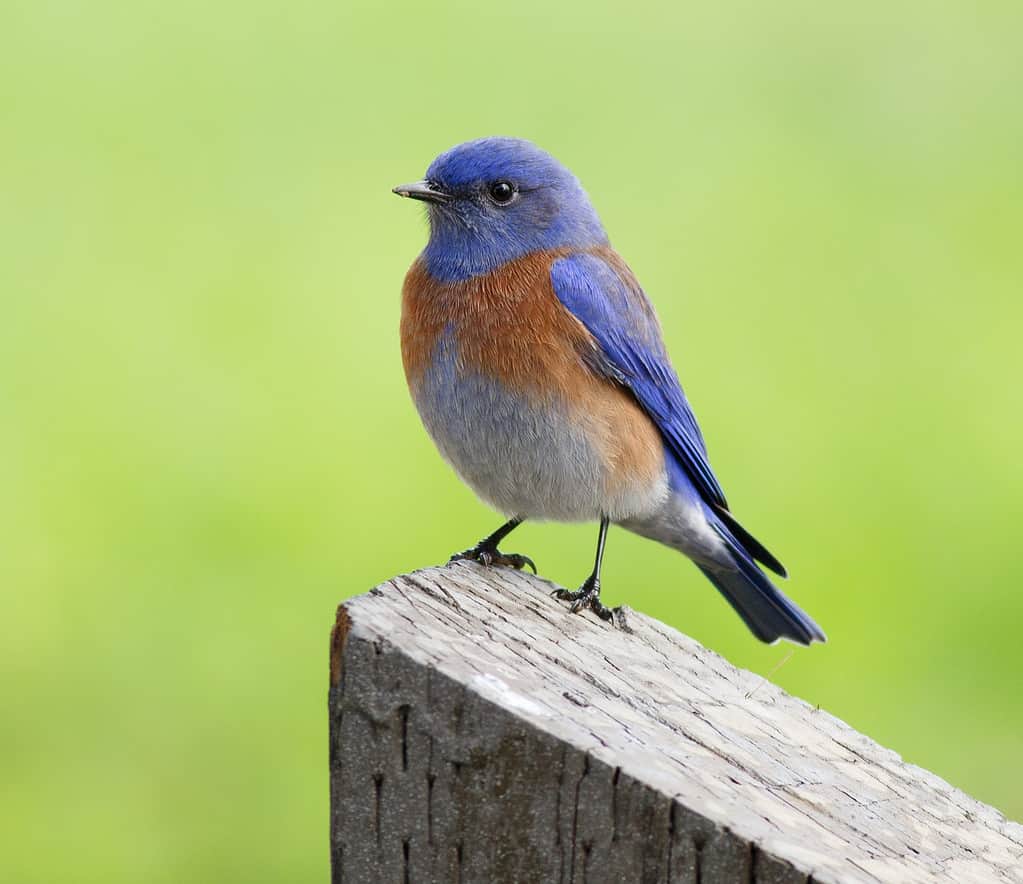Bluebirds are charming and vibrant visitors to US gardens bringing color, melodious song, and joy! Lots of people try to attract them by providing nesting boxes and feeders. These gorgeous little birds are attracted to most feeders but according to the Michigan Bluebird Society, they prefer a wooden hopper with a closed glass front and 1.5 inch entrance hole on each end. Watching them feed during the day on a recipe of sunflower chips, peanut butter and currants is one of life’s simple pleasures. But where do bluebirds go at night? Here we reveal where our feathered friends retreat to when the skies darken.
Which Bluebirds Live In The U.S.?
The US is home to three species of bluebird. The eastern bluebird has the largest range; from Canada’s southern provinces to Mexico and Honduras in the south. They like open country, meadows and large trees. The western bluebird occupies the western states – their range extends to a line between Montana’s northeastern corner to Texas’ southwest corner. Finally, the mountain bluebird also occupies the west of the country but with a larger range extending into Alaska and the Canadian Provinces.
Do Bluebirds Sleep?

Bluebirds are a common sight in gardens.
©MichaelRLopez/iStock via Getty Images
We have all heard the sound of birds in the morning advertising that the day has started and that they are awake! According to Cornell University, Eastern bluebirds have a fairly low-pitched song with several phrases. Each of these is made up of between one and three notes. It sounds a bit like a tu-a-wee. But where have these guys been all night and do they even sleep?
Bluebirds are perching birds so they can sleep on perches. They puff up their feathers to keep them warm and tuck their feet and bill into their feathers for the same reason. Birds don’t sleep in the same way as we do – instead, they doze into a half-conscious state so that they are still alert for danger. They also tend to sleep for several short periods rather than taking one longer rest.
Why Don’t Sleeping Bluebirds Fall Off Perches?
If humans tried to sleep in trees, most of us would fall out! So, how can bluebirds sleep when precariously perching? This is because when a perching bird places all their weight on their feet, the muscles in their legs force the tendons of their feet to tighten, effectively grasping the branch. They are secured to the tree even though they are relaxed.
Where Do Bluebirds Go At Night?

Bluebirds rest in nesting boxes.
©Bonnie Taylor Barry/Shutterstock.com
Bluebirds rest at night so that they can have plenty of energy in the day. Here are four common places where they rest at night.
Nests
Female bluebirds sleep in their nests when they have young to look after. Hatchlings are very vulnerable and cannot regulate their body temperature. They need their Mom to sleep with them to keep them warm. She leaves from time to time to find insects but soon returns.
However, the male bird also takes turns to sleep in the nest and protect their young. If temperatures drop, they fluff up their feathers and tuck their heads under their wings to conserve heat.
Tree and Shrub Branches
It is common to see fledglings (young birds who have just left the nest) grouped together in trees and shrubs. They choose a location close to their nest until they are mature enough to venture further. The male bird will often keep feeding them at this time.
Adult birds also choose the sheltered branches of trees and shrubs to rest in. You can help by planting native trees near the bluebird’s nesting and foraging areas.
Holes In Trees
Not all bluebirds migrate south for the winter. Some choose to remain in the US during the colder months and this presents them with a problem. As such a small bird, they have a large surface-area-to-volume ratio and can lose a lot of heat. So, they head for crevices in trees. Sometimes, you will see several birds in one hole gathered together to conserve body heat. You can help by leaving dead trees in your garden as they have the best resting crevices for bluebirds! Bluebirds do not make their own holes in trees. They occupy holes created by woodpeckers and natural crevices.
Birdhouses
Bluebirds may also take advantage of birdhouses to shelter in. Sometimes you will see them carrying material in and think that they are nesting. In fact, they are going to use it to keep themselves warm. It is not unusual to see several bluebirds huddled together in the same box.
You can help by providing nesting boxes in your garden. They should be between 3 and 6 feet off the ground on fence posts but away from trees. The internal dimension of the box should be four square inches and it should be between eight and 12 inches deep.
The photo featured at the top of this post is © Steve Byland/Shutterstock.com
Thank you for reading! Have some feedback for us? Contact the AZ Animals editorial team.






